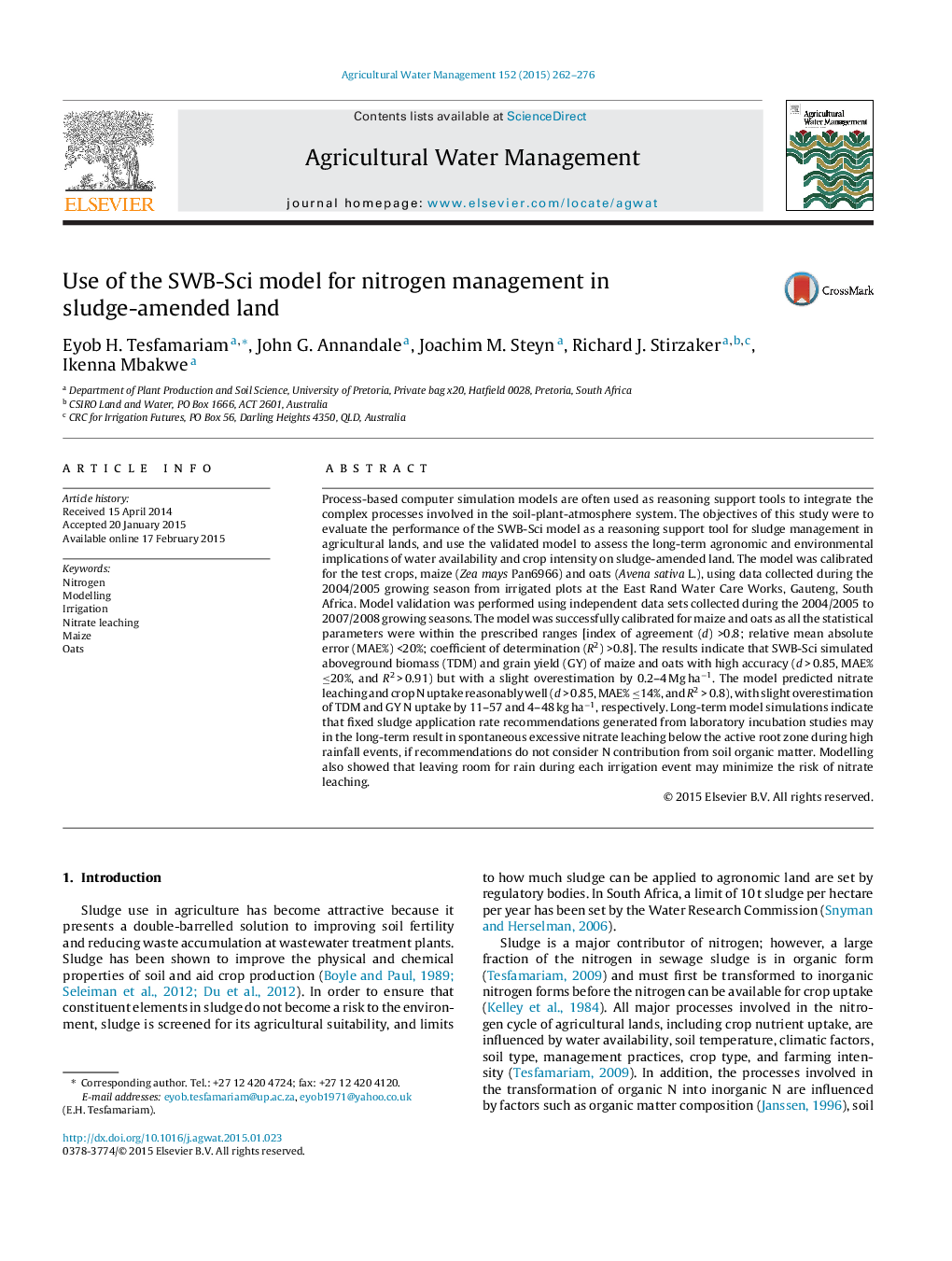| Article ID | Journal | Published Year | Pages | File Type |
|---|---|---|---|---|
| 4478538 | Agricultural Water Management | 2015 | 15 Pages |
•It is easier to match N demand and supply of crops under irrigation than rainfed.•Sludge application rates should consider rainfall regime and cropping intensity.•Leaving room for rain during each irrigation event will minimize nitrate leaching.•Modelling shows that fixed sludge rate could compromise either yield or environment.•Fixed sludge rates under dryland systems may result in nitrate flushes during high rainfall events.
Process-based computer simulation models are often used as reasoning support tools to integrate the complex processes involved in the soil-plant-atmosphere system. The objectives of this study were to evaluate the performance of the SWB-Sci model as a reasoning support tool for sludge management in agricultural lands, and use the validated model to assess the long-term agronomic and environmental implications of water availability and crop intensity on sludge-amended land. The model was calibrated for the test crops, maize (Zea mays Pan6966) and oats (Avena sativa L.), using data collected during the 2004/2005 growing season from irrigated plots at the East Rand Water Care Works, Gauteng, South Africa. Model validation was performed using independent data sets collected during the 2004/2005 to 2007/2008 growing seasons. The model was successfully calibrated for maize and oats as all the statistical parameters were within the prescribed ranges [index of agreement (d) >0.8; relative mean absolute error (MAE%) <20%; coefficient of determination (R2) >0.8]. The results indicate that SWB-Sci simulated aboveground biomass (TDM) and grain yield (GY) of maize and oats with high accuracy (d > 0.85, MAE% ≤20%, and R2 > 0.91) but with a slight overestimation by 0.2–4 Mg ha−1. The model predicted nitrate leaching and crop N uptake reasonably well (d > 0.85, MAE% ≤14%, and R2 > 0.8), with slight overestimation of TDM and GY N uptake by 11–57 and 4–48 kg ha−1, respectively. Long-term model simulations indicate that fixed sludge application rate recommendations generated from laboratory incubation studies may in the long-term result in spontaneous excessive nitrate leaching below the active root zone during high rainfall events, if recommendations do not consider N contribution from soil organic matter. Modelling also showed that leaving room for rain during each irrigation event may minimize the risk of nitrate leaching.
